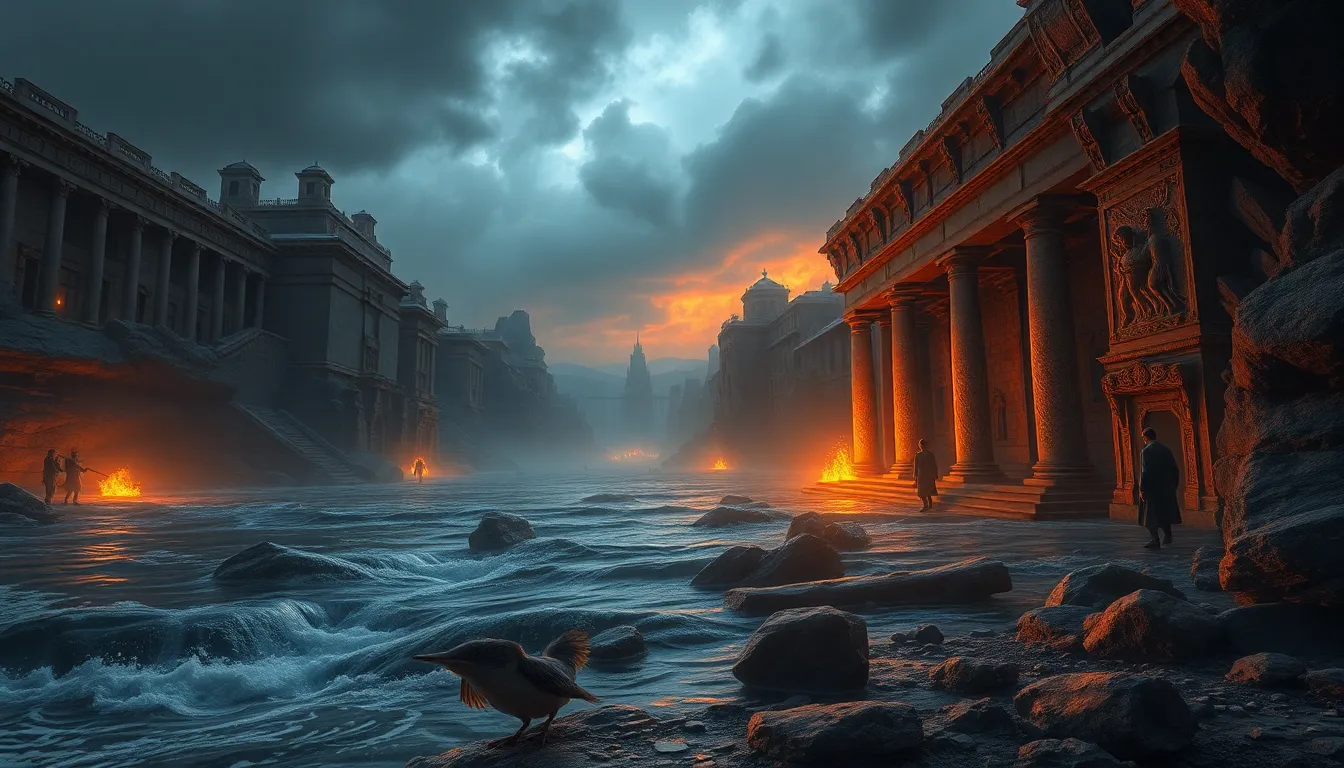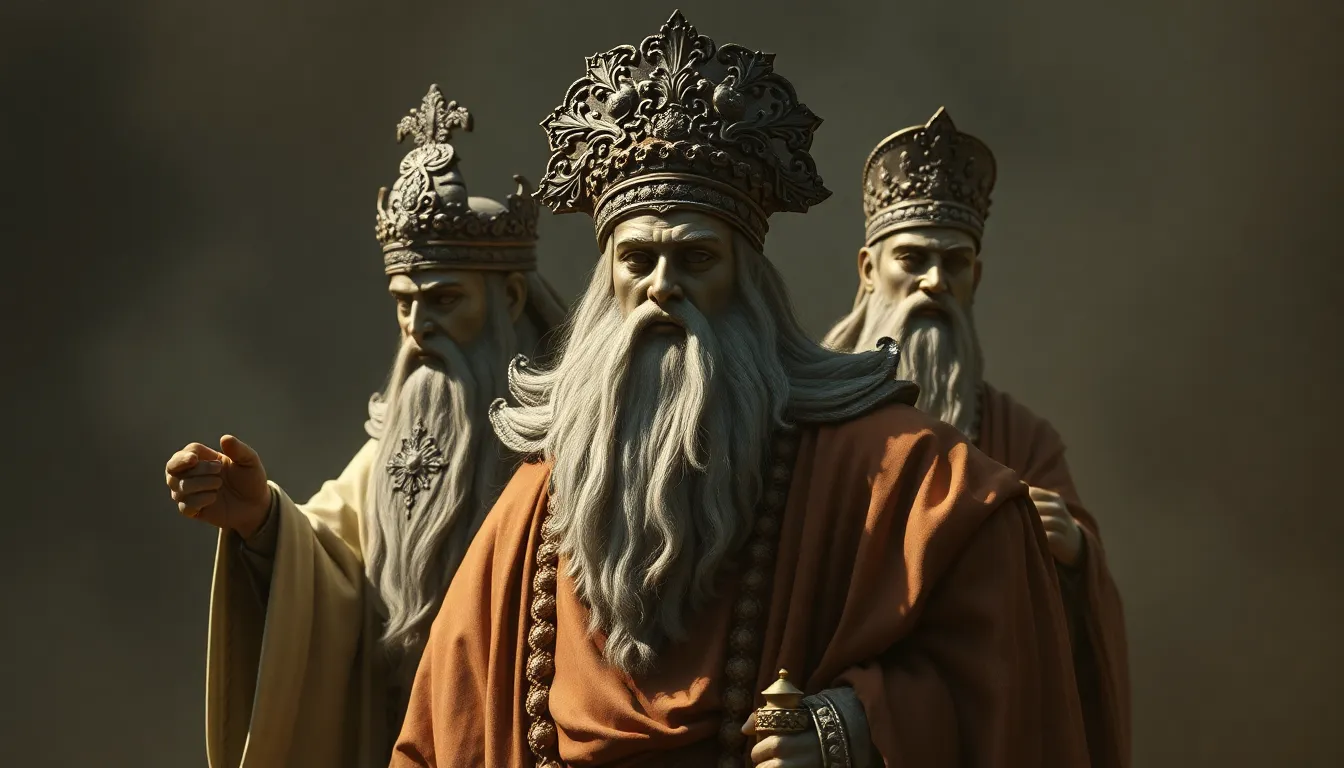From Myth to Reality: The Historical Basis of Flood Legends
1. Introduction: The Universality of Flood Myths
Throughout history, flood myths have emerged in various cultures around the globe, capturing the imagination and highlighting the fears of communities facing natural disasters. From the biblical account of Noah’s Ark to the Mesopotamian Epic of Gilgamesh, these stories serve as a testament to humanity’s encounter with water’s destructive power. The universality of flood legends offers insights into how different societies interpret and give meaning to catastrophic events, revealing a shared human experience that transcends geographical and cultural boundaries.
Studying these myths is significant not only for understanding the narratives themselves but also for uncovering the historical events that may have inspired them. By examining the roots of these legends, we can gain lessons about resilience, survival, and the relationship between humans and nature.
2. Defining Flood Legends: Characteristics and Common Themes
Flood legends are characterized by several key elements, often featuring:
- A great deluge that destroys civilization.
- A protagonist who is warned of the impending disaster.
- The survival of a select few, often through a vessel.
- The eventual repopulation or renewal of the earth.
Common themes that emerge from these myths include:
- Divine Retribution: Many flood narratives portray the deluge as a punishment from the gods or deities for humanity’s sins.
- Purification: The flood serves as a means of cleansing the earth and starting anew.
- Survival: The emphasis on survival in the face of disaster highlights human resilience and adaptability.
3. The Great Flood in Ancient Civilizations
In ancient Mesopotamia, the Epic of Gilgamesh recounts a flood narrative that closely parallels the biblical account of Noah. In this epic, Utnapishtim, a character warned by the god Ea, builds a massive boat to save his family and various species from a catastrophic flood sent by the gods. This story reflects the Mesopotamian understanding of divine will and the fragility of human life.
Similarly, ancient Egyptians revered the Nile as a source of life, yet they also recognized its potential for destruction during periods of flooding. The annual inundation of the Nile was both a blessing and a threat, and myths surrounding the river often emphasized themes of rebirth and renewal, linking the cycle of flooding to the cycles of life and death.
4. Hebrew Scriptures: The Account of Noah’s Ark
The biblical account of Noah’s Ark is perhaps the most well-known flood story. In Genesis, God decides to cleanse the earth of its wickedness through a great flood, instructing Noah to build an ark to save his family and pairs of every living creature. This narrative emphasizes themes of covenant, divine mercy, and the promise of renewal after devastation.
Comparison with other cultural flood stories reveals striking similarities and differences. For instance, while the Noah story focuses on obedience and divine favor, the Epic of Gilgamesh emphasizes the inevitability of death and the quest for immortality. These variations reflect the unique cultural contexts from which these myths arise.
5. Flood Myths in Indigenous Cultures
Indigenous cultures also possess rich traditions of flood legends. Among Native American tribes, numerous stories recount great floods that reshaped landscapes and created new opportunities for life. For example, the Ojibwe people tell of a time when the Creator decided to cleanse the world, leading to the survival of select members who would repopulate the earth.
In Aboriginal Australian stories, floods often symbolize both destruction and rebirth. The narratives frequently incorporate themes of connection to land and the cyclical nature of existence, illustrating the deep spiritual relationship indigenous peoples have with their environment.
6. Scientific Perspectives: Geological Evidence of Ancient Floods
Scientific research has unveiled geological evidence supporting the occurrence of ancient floods that may have inspired these myths. Investigations into sediment layers, for example, reveal patterns of catastrophic flooding that align with the timelines of various flood legends.
One notable case is the Black Sea deluge theory, which suggests that a massive flood occurred around 7,500 years ago when rising sea levels breached a natural dam, leading to a significant influx of water into the Black Sea basin. This event may have influenced flood narratives in the surrounding cultures.
7. Archaeological Findings: Material Evidence of Flooding
Archaeological discoveries further corroborate the existence of historical floods. Excavations in ancient Mesopotamia have uncovered layers of sediment indicating rapid inundation, while the remains of ancient settlements show signs of water damage and destruction.
These findings provide tangible evidence that aligns with flood legends, suggesting that such catastrophic events were not merely mythological but grounded in reality.
8. Cultural Impact: How Flood Legends Shaped Societies
Flood myths have profoundly influenced religious beliefs and practices across cultures. They often serve as cautionary tales about human behavior, encouraging ethical living and reverence for the divine. In literature and art, flood narratives have inspired countless works, from classical literature to contemporary films, reflecting society’s ongoing fascination with these powerful stories.
The narratives have also shaped folklore, becoming integral to cultural identity and heritage. They remind communities of their history and the lessons learned from past calamities.
9. Modern Interpretations: Flood Myths in Contemporary Culture
In contemporary society, flood myths have seen a resurgence in popular media, often reinterpreted to address modern environmental concerns. Films, novels, and television series frequently draw on these ancient stories to explore themes of climate change, natural disasters, and resilience.
The relevance of ancient flood narratives continues to resonate today, prompting discussions about humanity’s relationship with nature and the need for sustainable practices to prevent future catastrophes.
10. Conclusion: Bridging Myth and Reality
The exploration of flood legends reveals a fascinating interplay between myth and reality. While these narratives may be steeped in supernatural elements, they often reflect historical events that shaped the lives of those who told them. Understanding the origins and implications of these stories is crucial for preserving them for future generations.
Flood myths not only serve as reminders of humanity’s vulnerability to nature’s fury but also highlight our resilience and capacity for renewal. As we continue to face environmental challenges, the lessons embedded in these ancient tales remain ever relevant.



